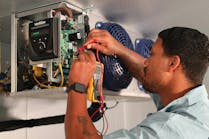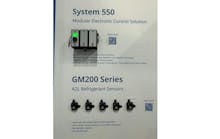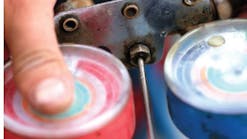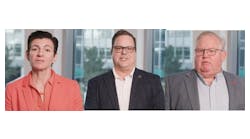BY JIM MOZER, EMERSON CLIMATE TECHNOLOGIES, REFRIGERATION
The refrigeration industry has changed a great deal in the last ten years. System monitoring, electronics and diagnostics have changed the way contractors and end-users alike look at commercial refrigeration equipment.
These trends will only continue. Following is a peek into the crystal ball, a collection of very educated guesses into what lies ahead in the commercial refrigeration industry.
"We need to lower our energy costs."
That's what contractors, consultants and other equipment buyers can expect to hear from end-users from now on. Rising fuel costs and tight profit margins mean that retailers, the pre-eminent buyers and users of commercial refrigeration equipment, will be paying even closer attention to how to cut costs. Beginning in the next five years, energy efficiency, green solutions, and total cost of ownership will be more top of mind for cost-conscious endusers than ever.
New product solutions
Scroll compressors are popping up more often within commercial refrigeration applications. Their reliability and compact size has made them perfect for walk-ins and distributed refrigeration systems. These scroll-based system solutions will continue to grow at double-digit levels annually because of the aforementioned reliability benefits, as well as their tendency to be highly energy efficient. The growth of interest in scroll technology points to the industry's desire and commitment to evolve and move forward by looking at new products and solutions to solve familiar problems. The compressor's energy efficiency in a small compact package is appealing to system designers.
Demand will also increase for new systems designed to have smaller refrigerant charges and less potential for leaks, such as distributed and secondary systems. This trend in system design is what drives OEMs to adopt new and improved technologies. For instance, Emerson Climate is offering products such as compressor controllers with improved diagnostics.
Better performance through technology
Contractors will be given more information than ever to help them diagnose and troubleshoot system problems. This is because system and component electronics will continue to grow in prevalence throughout the industry. These electronics are giving contractors enhanced diagnostic tools and allowing them to gauge system performance more precisely than ever.
In the next 10 years, with more electronic elements helping to protect refrigeration systems, there will naturally be a growing need to integrate these electronics, a way to gather the information so that it can be easily communicated, monitored and acted upon. Equipment like compressors, valves and controllers will communicate between one another in a way that brings overall system performance to heights unseen before. Over the next 20 years, system efficiencies will continue to increase, and advanced compressor controllers and communications across refrigeration systems will become standard on most equipment.
A change in aftermarket philosophy
The growing cost-consciousness from endusers will force contractors, and therefore equipment distributors, to think differently about service and replacement. In the past, when a compressor has failed, the solution has always been to replace that compressor. With today's equipment becoming more sophisticated with each new generation, that approach may not always make the best financial sense. Because of labor costs, it can actually cost an end-user less to replace an entire refrigeration condensing unit versus changing out a key component, such as a compressor.
Addressing environmental concerns
Other than the obvious environmental benefits from energy-efficient equipment, focus will turn toward environmentally friendly refrigerants. As has been seen with the 2010 deadline for phasing out all HCFC refrigerants, emphasis on refrigerants with low global warming potential will grow. This is why in the air conditioning industry, much attention is on new equipment designed around R-410A. The near future will see more regulations concerning refrigerant on the state and federal levels. New technologies will continue to be introduced that are designed specifically to work with newer, more environmentally friendly refrigerants. In response, companies like Emerson are reaching out to OEMs, wholesalers, contractors and end-users to ensure that there are always enough products to meet customer demand. It's also key that Emerson and other companies help contractors to get the necessary training they need to install and service these new equipment designs.
Energy efficiency will also see new state and Federal regulations; OEMS and contractors will require education on all the regulations. Some of the new product and design changes will help to meet these regulations, as scroll compressors and diagnostic devices will continue to make the systems more efficient.
Jim Mozer is vice president of marketing for Emerson Climate Technologies, Refrigeration Division









